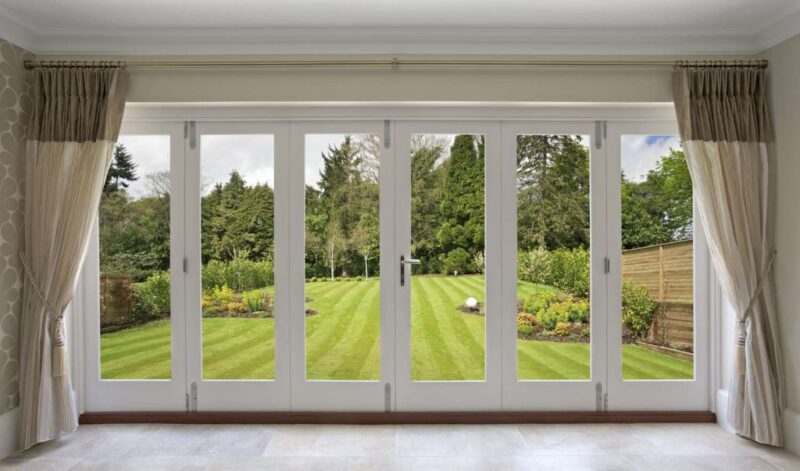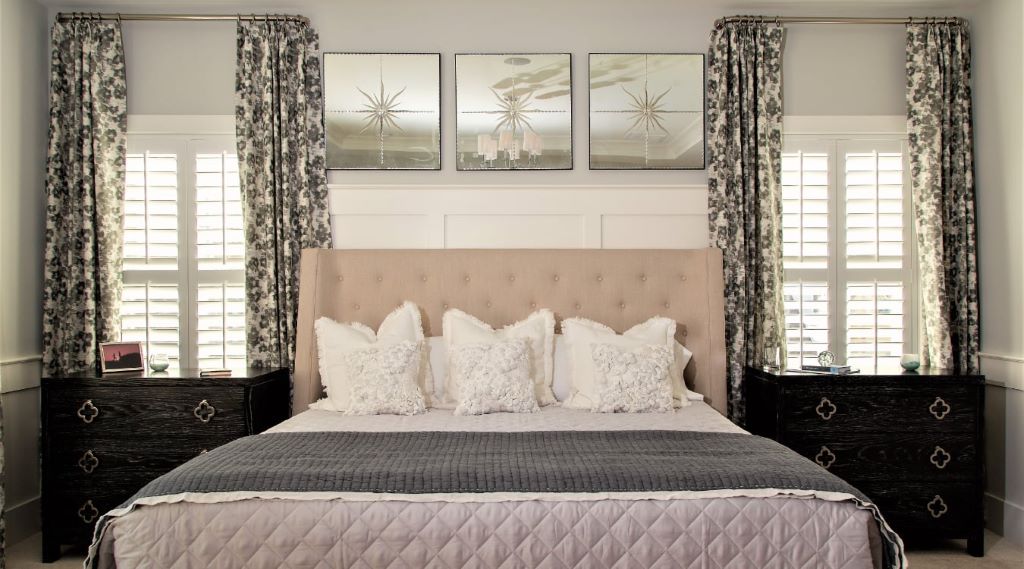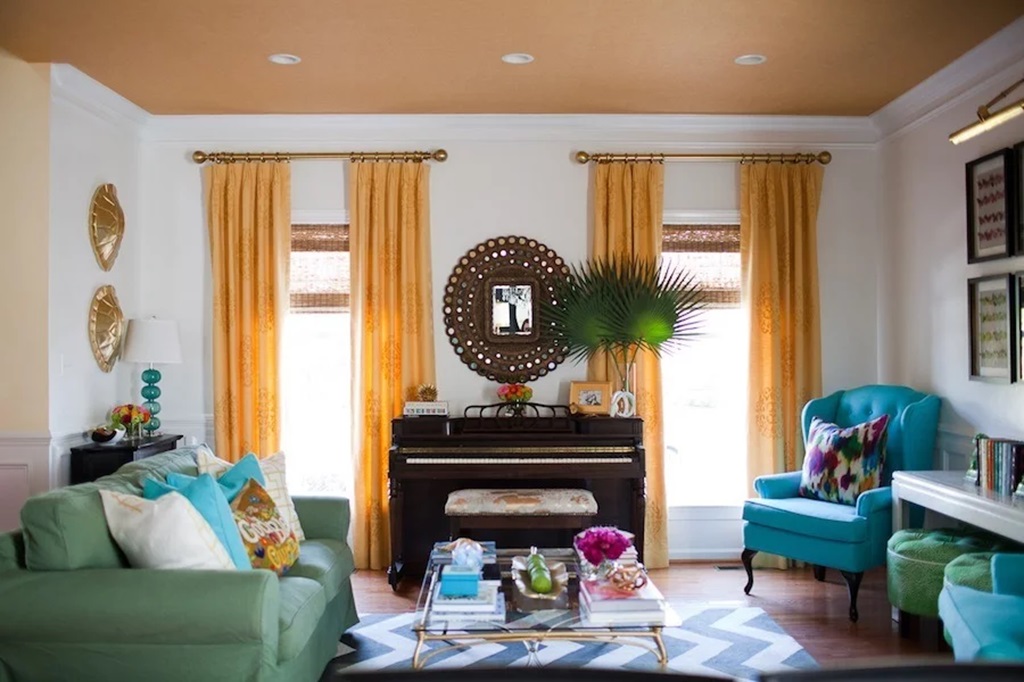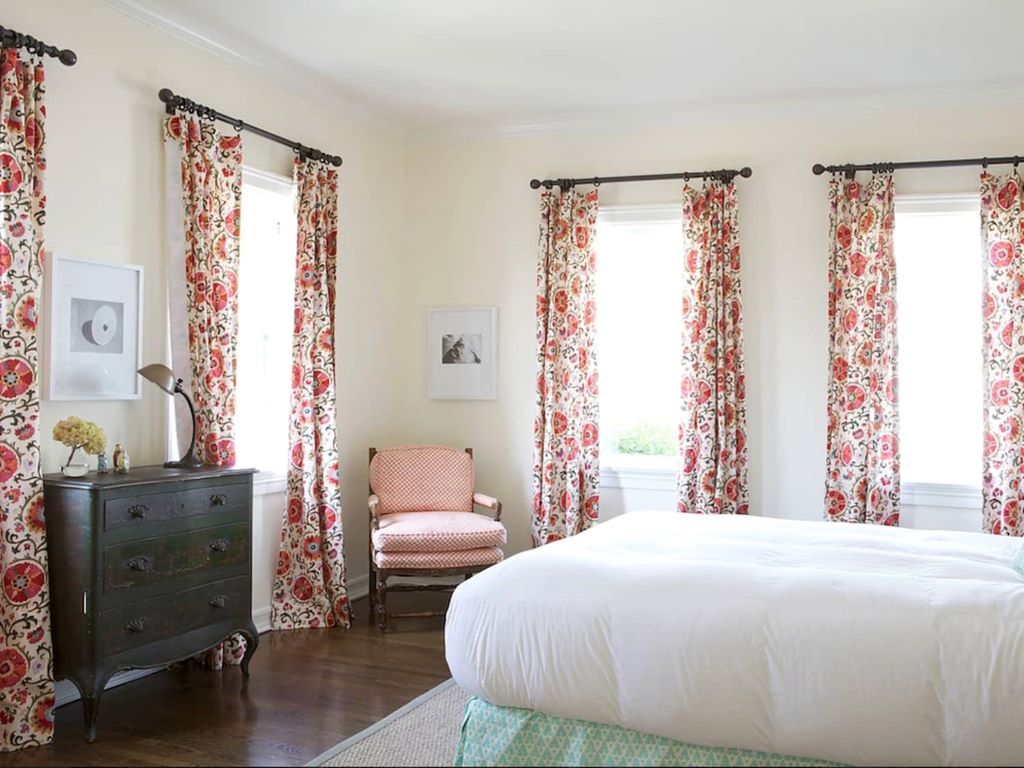Having two windows on the same wall can create an aesthetically pleasing symmetry in a room. However, dressing these windows in a cohesive, attractive manner requires some forethought and planning. There are several factors to consider when deciding how to treat a pair of windows, from window treatments and sills to the space in between. With good design principles in mind, you can make the most of your dual windows.
Choose Complementary Window Treatments
You’ll want to select window treatments that coordinate well when dressing two windows. There are a few routes you can take:
Matching Window Treatments
Choosing the same window treatments for both windows creates a seamless, symmetrical look. This could involve:
- Identical curtains or drapes in the same fabric, color and style
- Matching blinds or shades in the same materials and colors
- Consistent valances, cornices or other accents
Matching treatments make the windows appear unified. Discover how to decorate between two windows, a balanced, and visually pleasing effect. The key lies in coordinating elements seamlessly, creating a harmonious look that enhances the overall aesthetic of the space. Whether it’s choosing complementary curtains, adding a stylish window seat, or incorporating decorative elements between the windows, the goal is to maintain a cohesive and inviting atmosphere. By exploring creative solutions, you can transform the space between two windows into a focal point that enhances the beauty of your home.
Complementary Window Treatments
Another option is complementary window treatments in different styles that still work well together. For example:
- Curtains on one window, blinds on the other
- Roman shades on one, roller shades on the other
- Drapes in one fabric on one window, drapes in another complementary fabric on the other
The treatments should share colors, textures and general aesthetics. However the designs can differ for added visual interest.
Mix and Match
For more diversity, treat each window independently with different styles, fabrics and colors. This makes the windows secondary focal points. To still achieve cohesion, repeat colors in the palettes or employ prints/patterns that contain colors from one treatment in the other.
Consider the Room’s Use
The window treatments should suit the room’s purpose. For instance, in a bedroom maximize privacy and light control with blackout drapes, cellular shades or layered curtains. In a living room prioritize natural light with sheers or adjustable translucent shades.
No matter your approach to dressing two windows ensure the treatments fit within the room’s overall decor.
Pick Complementary Window Sills
Don’t overlook the sills when coordinating your dual windows. Sills provide opportunities to further link the windows through consistency or contrast:
- Matching sills – Use the same window sill color, material and style for both windows. This strengthens visual symmetry.
- Complimentary sills – Vary the sills slightly while maintaining coordination. Employ different but compatible colors, alternate materials like wood and stone, or style one sill simpler than the other.
- Unique sills – Make each sill its own focal point with distinct colors/materials, built-in storage compartments, or decorative trim and accents.
Window sills impact the view and ambiance. So ensure your sill choices align with the treatments and room.
Use Space Between Windows Strategically
The wall space between two windows provides useful real estate for tying the windows together:
Mirror/Artwork
Hang a mirror or piece of artwork centered between the windows. This balances the composition while drawing the eye from one window to the other.
Shelving
Install shelves, cubbies or display ledges across the wall space. This links the windows functionally and aesthetically. The items displayed then become part of the cohesive ensemble.
Architectural Details
Incorporate architectural details like wainscoting, trim or board and batten vertically between the windows. Visually this extends the windows upward into a uniform composition.
Fabric Panel
Mount a fabric panel, valence or curtain rod between the windows. You can make this fabric match the window treatments for continuity. Or contrast it for more diversity.
Wall Color
Paint or wallpaper the between-window space in a color that complements the window accents. This makes the whole wall work together.
Take advantage of the intervals between windows. Filling them thoughtfully promotes overall unity.
Use Consistent Window Styles
The architectural style and shape of the windows themselves impact pairing potential.
Identical Windows
Your work is halfway done if the dual windows match exactly in size, shape, style and details. Identical windows easily accept uniform treatments. Just repeat the designs on each one.
Complementary Windows
If the window shapes differ slightly, tailor the treatments to downplay inconsistencies:
- Hang drapes high and wide to minimize shape variations.
- Select deeper-colored paint or wallpaper to ground varied windows.
- Add trim around the windows to create identical framing.
Clashing Windows
For two windows with little in common structurally, dress them to feel intentional rather than haphazard. Some ideas:
- Treat them like artwork – frame and highlight unique qualities.
- Embrace contrast – pair a simple window with an ornate one for a provocative vignette.
- Add unifying architectural elements around the windows like an extended head casing.
Rather than fight dissimilar windows, leverage them to create an eclectic, artful wall grouping.
Light and Layer Window Treatments
Getting the right combination of window treatments provides custom control over light, views and privacy:
- Sheers or thin curtains filter and soften light.
- Blinds, shutters and shades block direct sun and views.
- Heavy drapes or second curtains layer over other treatments for full blackout capabilities.
Consider your needs room-by-room:
Bedrooms – Layered treatments for darkness and privacy. Hang blackout lining behind sheer under-curtains.
Home Offices – Adjustable shades to manage glare on screens. Add curtains to further reduce brightness.
Living Rooms – Sheers and drapes to modulate outside light and views.
Media Rooms – Complete light control with blackout cellular shades plus thick lined curtains.
Mix and match treatments at each window for the ideal custom functionality.
Observe Proportion and Scale
When determining treatments for two adjoining windows, optics matter. Follow general interior design principles:
Size of Windows
Window treatments should be proportional to the window size. Oversized treatments can overwhelm smaller windows. Undersized treatments make large windows appear bare.
Distance Between Windows
The width of the wall space between dual windows affects their visual relationship. Treatments on windows set very far apart can compete. Bring tightly grouped windows with consistent window dressings.
Ceiling Height
The height from the windows to the ceiling impacts the appropriate treatment scale. Tall drapes suit high ceilings but overwhelm low ones. Adjust treatment sizes relative to total wall dimensions.
Wall Color
Light walls make windows and treatments recede. Darker walls emphasize and showcase windows – potentially too much with ornate treatments.
Get the size and scale right so paired windows and treatments complement rather than clash.
Add Stylistic Touches
Unique flourishes and accents put finishing touches on dressed dual windows. Consider:
- Window scarves swagged above, between or below
- Decorative trim on curtains or shades
- Tassels, tiebacks or finials on treatment edges
- Pillows, throws or plants on the sills
Such adornments make ordinary treatments extraordinary. They also further link the two windows through repetition of colors, fabrics and materials.
Have fun highlighting and enhancing your dual windows with accessories. But take a minimalist approach if your treatments or windows have intricate styles to avoid overkill.
Create Consistency Room-Wide
Treatments for matched windows shouldn’t exist in isolation. Tie everything together holistically:
- Pick up colors from window shades/curtains in upholstery and area rugs.
- Echo trims or fabrics between windows in other accents.
- Coordinate window and sill materials with flooring.
The windows should harmonize with the overall room scheme. For a pulled-together look, create deliberate connections in colors, patterns, textures and materials throughout the space.
Dressing two windows on the same wall presents exciting design potential. Follow these principles to create a professional, polished look. Then sit back and enjoy the beautiful symmetry and style only dual windows can achieve.
Frequently Asked Questions
How far apart should two windows on one wall be?
Ideally, two windows on the same wall should be spaced 3 to 5 feet apart or 25% to 35% of the wall’s overall length. This provides a good balance and proportion between negative and positive space. Avoid spacing windows too close together or too far apart, which diminishes their visual impact.
Should you put curtains on both windows?
Putting curtains on both windows is recommended to create symmetry and cohesion. Choose identical curtains or styles, fabrics and colors that complement each other. Curtains also allow you to modulate light control and privacy at each window separately.
Do two windows need two separate treatments?
It is not essential for two windows to have completely separate treatments. Using identical, uniform treatments is an easy way to make the windows coordinate. But mixing and matching complementary treatments can add more visual interest and customization. Layer sheers and curtains over shades/blinds to tie dual windows together functionally.
How do you decorate around a window?
To decorate around windows, extend their style outward with wall color, sconces, artwork or architectural details. Dress the sills attractively with plants, candles or decor. Hang mirrors/artwork between or above windows to tie them together. Ensure furniture layout balances and frames the windows appropriately.
How do you make uneven windows look even?
For uneven windows, cover inconsistencies with wide hanging curtains. Add trim or framing around windows to create matching dimensions. Treat them as accent walls with coordinated wallpaper/paint to diminish irregularities. Style windows individually to highlight unique attributes. Furniture placement can disguise uneven heights and sizes.
Conclusion
Dressing two windows on the same wall requires careful coordination of window treatments, accents and the surrounding space. Matching or complementary treatments, properly scaled and layered, are key to creating symmetry and flow. Take advantage of the wall space between windows to compositionally link and balance them. Enhancing curb appeal when selling a house involves not only meticulous landscaping and a well-maintained exterior but also attention to architectural details; consistent window sills seamlessly tie the exterior elements together, and echoing the colors and fabrics from the windows inside ensures a cohesive and inviting aesthetic throughout the entire property. With thoughtful planning and design, two windows can become a stylish focal point showcasing both consistency and variety.




